What are Plant Adaptations?
Did you ever think about the fact that plants make adaptations? I never really thought about it until I had to teach about them. The first thing I had to do was do some research. This was about ten years ago. There was almost nothing out there that was kid-friendly. Most of the articles I read were from colleges that were doing research. Now, because of the NGSS, there are many more student-friendly articles and activities. I am writing about plat adaptations to spare you what I went through. So, here are some basics.
Plant adaptations are changes that a plant makes over time. The changes are passed down from generation to generation over time. These adaptations help plants to meet their needs for air, sunlight, water, other nutrients, and the ability to reproduce. Plant adaptations can be structural such as changes in leaves, stems, roots, flowers, and the way each plant reproduces. Believe it or not, some plants even make behavioral changes just like animals do!
Plant Adaptations Examples in Different Environments
I’m sure you know that different types of plants thrive in some areas better than others. But, why is this? It is because those plants have adapted to their environment better than the others did. Here are some ways that plants have adapted over time.
Tundra Plant Adaptations
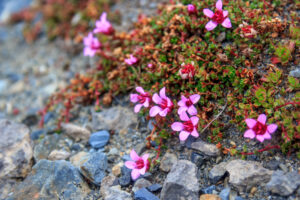
Winters in the tundra are cold, dark, and very long. Summers are short, but daylight is long. It only rains about 4 inches a year there.
Plants in the tundra have adapted to live close to the ground. It is warmer and more protected from wind there. Tundra plants have shallow roots which help them to get what little rainwater there is and protects the roots from the permafrost underneath. Many plants are a dark color. This dark color helps them absorb more sunlight. Leathery leaves keep the heat in and prevent water from getting out. Flowering plants grow quickly, so they have time to reproduce.
Desert Plant Adaptations
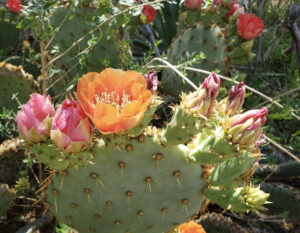
As you know, deserts are very dry, getting less than ten inches of rain a year. Because the sky is usually clear, the temperatures can get hotter than in any other environment during the day. However, deserts also cool down very quickly at night and can get below freezing in the winter.
Many types of cactus grow in the desert. Some cactus have roots that are thin and near the surface, so they can absorb water quickly when it rains. Others have long thick roots that can reach water under the ground when it is dry. They all have a thick stem in which they store water. Most cacti have thorns instead of leaves. Thus, they don’t lose as much water as they would if they had leaves. The spikes also prevent predators from eating them.
After a rain, desert flowers bloom quickly. Flowers are brightly colored to attract pollinators.
Ocean Plant Adaptations
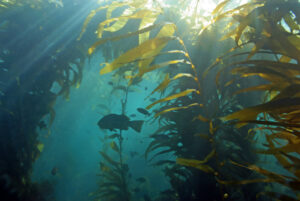
Ocean water is constantly moving. It is also very salty.
There are very few plants that can survive in the ocean. Most of the plants living there are plankton. Plankton are too little to be seen individually, but when they clump together you can see them floating. Their flat bodies help them to do this. Did you know that plankton makes half the oxygen for the animals on Earth?
Seagrasses have special roots that keep them in place. They have thick flexible leaves that bend around as the water moves. Some kinds of seaweed plants have the same adaptations. Other types of seaweed have air sacs that help them to float. Floating on the water lets them get energy from the sun, so they can make their own food.
Rainforest Plant Adaptations
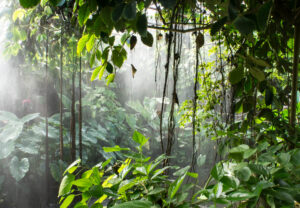
Rainforests are warm habitats. Rainforests get about 100 inches of rain a year. That is more rain than any other environment.
Many trees in the rainforest have large, wide roots. Part of this root system is above the ground. The trees have smooth, thin bark. These adaptations help the water leave the tree quickly. Many leaves are wide and have a “drip tip,” This lets the water roll right off.
You see many vining plants in a rainforest. They can climb to the top of bigger plants to get to the sun.
Temperate Forest Plant Adaptations
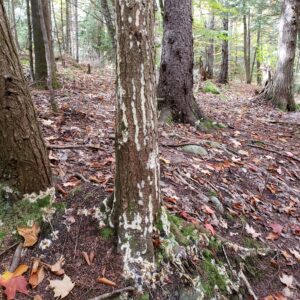
There are four seasons in temperate forests. The summer temperatures can be in the 70’s and higher, while the winters can be below freezing. Temperate forests get between thirty and sixty inches of rain a year.
The deciduous trees have thick bark that protects them from the cold weather. They have large root systems so they can get plenty of water and nutrients. Most of the leaves on the trees are thin and broad. This helps the trees collect sunlight. These leaves drop off in the winter, so the tree can’t lose as much moisture. Losing leaves also prevents the trees from getting damaged by heavy snow. Trees have adapted to grow new leaves in the spring.
Wetlands Adaptations in Plants
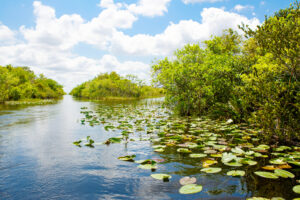
Areas covered by shallow water for a prolonged time are called wetlands. The soil is very wet. Many plants thrive there.
Water lilies have many of the adaptations that plants living in swamps need. The leaves and stems under the water can bend. Water lilies have space in their stems for air. The air helps them stay up. Their flat leaves make it so they can float. This way they can get sunlight. Many water lilies have thorns on the bottom of their leaves that keep predators away.
Behavioral Adaptations Examples
Living stone plants use camouflage to blend in with their environment.
The orchid bee plant looks like a female bee, so they can get the males to pollinate them.
Skunk cabbage smells like a skunk. This brings bugs that like to eat rotting meat. Thus, they get pollinated.
How Do Plants Adapt to Their Environment: Teaching Ideas
- Review the needs of plants. What are the needs and how do plants meet them?
- Show the video below.
- When students are learning about a specific ecosystem they are naturally curious about organisms that live there. Ask students to research a plant. Adaptations will naturally come up. Here are some articles and desert papers for your convenience.
Desert Plant Adaptations Informational Reading Passages and Research
- Read about plant adaptations. I have written two books on the topic. They provide the same information, but one is at a higher reading level than the other.
- Our TpT shop also has some premade articles and activities for plant adaptations (our #1 best seller). My students find these very engaging, and I’m sure yours will too.
So, now you know why and how plants adapt to their environment. Teaching this engaging concept should be a breeze for you!
To learn about how animals adapt to their environment read How Do Animals Adapt to Their Environment: Awesome Information for Teachers.
And remember, it’s all science!

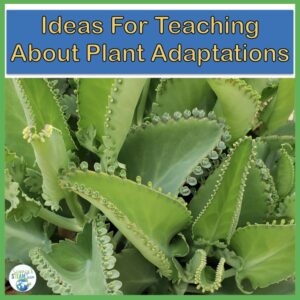
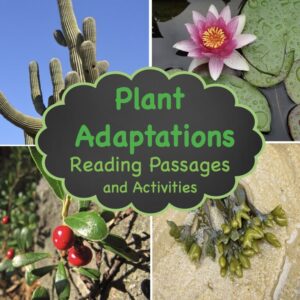
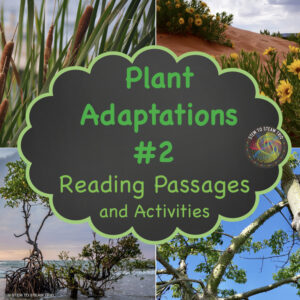


One Comment